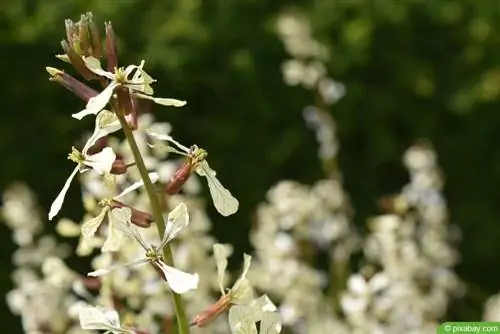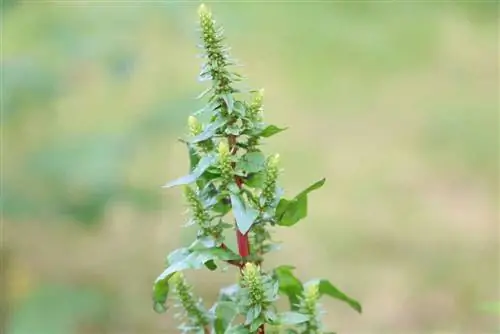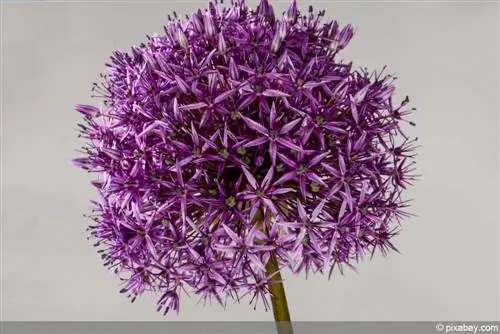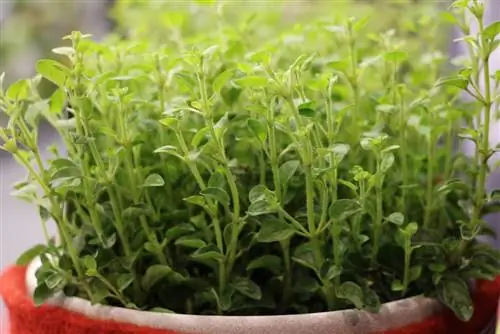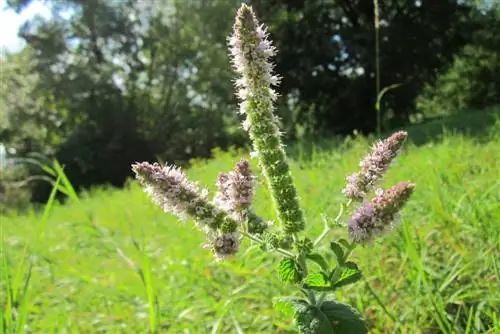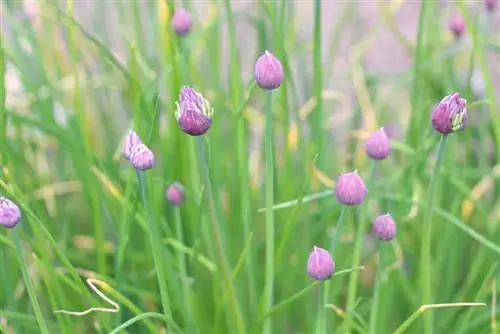- Author admin [email protected].
- Public 2023-12-17 03:39.
- Last modified 2025-06-01 06:48.
Behind the name rocket there are two main species: the annual garden, oil or mustard rocket (Eruca vesicaria) and the perennial wild rocket (Diplotaxis tenuifolia). The leaves are mainly used, thanks to their spicy to mild and hot to nutty taste. But what happens when arugula blooms, is it still safe to eat?
When the rocket blooms
The first flowers open in June/July. Then it won't be long until the plants are in full bloom. You should know that the wild rocket produces yellow flowers and the mustard rocket produces white flowers. In contrast to the mustard variety, the yellow-flowering varieties are hotter and spicier and are therefore particularly suitable for seasoning. In principle, the leaves are still edible when the rocket is blooming, but the older they get, the sharper and bitter they taste. They also get a firmer structure.
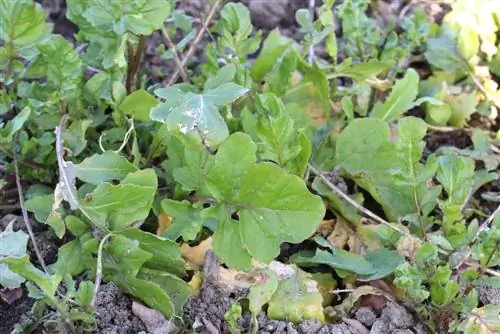
But rocket that has already bloomed also has its advantages, because not only the leaves are edible, but also flower buds, flowers and seeds. For many, the flowers are a real delicacy. This applies to both the mustard or lettuce rocket and the wild rocket. The flowers have a rather mild taste compared to the leaves. They are spicy, nutty and slightly sweet. They are somewhat reminiscent of watercress. They can add that certain something to salads, desserts and summer cocktails or be used as a side dish to main courses.
Tip:
So-called mustard oil glycosides are responsible for the bitter or sharp taste of the leaves, which incidentally have a he alth-promoting effect.
Arugula season
- Arugula season begins four to six weeks after sowing
- Harvesting leaves and stems throughout the entire growing season
- Leaves should be 10-15 cm long
- Particularly tender in the young stage
- Choose a sunny afternoon to harvest
- Nitrate content is then lower
- Cut the leaves about three centimeters above the ground
- Breaking out the tips can reduce the sharpness
- Harvest flowers in the bud stage and during flowering
When stored dry and at temperatures between two and seven degrees, flowers stay fresh for up to five days. There is also the option of drying them and then processing them into a herbal s alt, for example. If you are only interested in the leaves, you should remove the inflorescences at the beginning.
Tip:
Rucola is very suitable for growing sprouts, ideally on the windowsill. They can be harvested after about two weeks.
Likelihood of confusion
The rocket has a poisonous double, the yellow-flowering ragwort, a weed that contains strong liver toxins. There is a risk of confusion, especially if you like collecting wild herbs, but less so in your home garden. If you look closely, there are similarities but also clear differences.
Arugula
- Danger of confusion, especially with wild rocket and ragwort
- Similarities and differences, especially in the leaves
- The leaf edges of the rocket are noticeably more rounded
- Leaves larger and lighter with more pronounced veins
- Another identifying feature, the intense smell of the rocket
ragwort
- Leaf edges of ragwort small jagged
- Leaves more or less hairless, thistle-like
- Especially younger plants have cobweb-like hairs
- Flowers develop into dandelions
- ragwort is poisonous even when dried
Tip:
Arugula should not be grown on soils where other cruciferous vegetables (cabbage varieties) grew three to four years previously.
Wild Rocket - Varieties
‘Dragons Tongue’
The leaves of this new variety have striking red-purple leaf veins. They are firmer, very aromatic and slightly spicy. Thanks to the coloring of the leaves and flowers, this rocket becomes a decorative and savory addition to the menu. Harvest after three to four weeks. Can be sown all year round as a greenhouse culture.
‘Wasabi rocket’
While most types of rocket impress with a nutty taste, wasabi rocket surprises with a clear and intense horseradish or wasabi note. After three to four weeks, young leaves can be harvested continuously.
Tip:
Together with the top leaf shoots, the still closed flower buds are a real delicacy.
‘Wildfire’
It is probably the hottest rocket. Its leaves are wider than those of the classic varieties. It grows quickly, shoots late and its leaves have a particularly spicy and intense peppery taste.
Rucola a Foglia di Oliva
With its leaves, this variety is a bit out of the ordinary. The leaves are not slit, but narrow to olive-shaped and smooth-edged. Rucola a Foglia di Oliva is perennial, completely hardy and offers an excellent peanut taste.
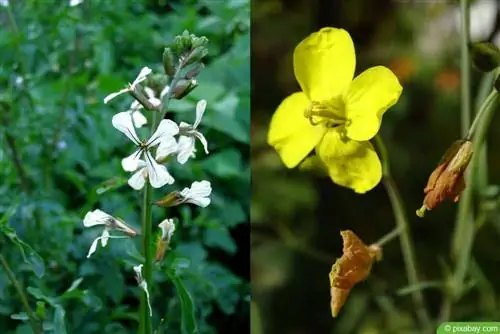
Mustard or salad rocket - varieties
‘Pronto’
The fast-growing variety 'Pronto' is a further development of the common rocket. Its green leaves are deeper and more finely slit. They taste milder and slightly nutty but are still pleasantly spicy and peppery.
‘Bologna’
It is a robust and reliable rocket with good taste properties. It grows faster than perennial varieties. Its finely toothed leaves have a very pleasant and spicy rocket flavor.
‘Ruca’
The salad rocket 'Ruca' is a fast-growing, aromatic herb with a particularly spicy taste. Its leaves are delicate, entire and slightly wavy. The taste is between cress and peanut.

